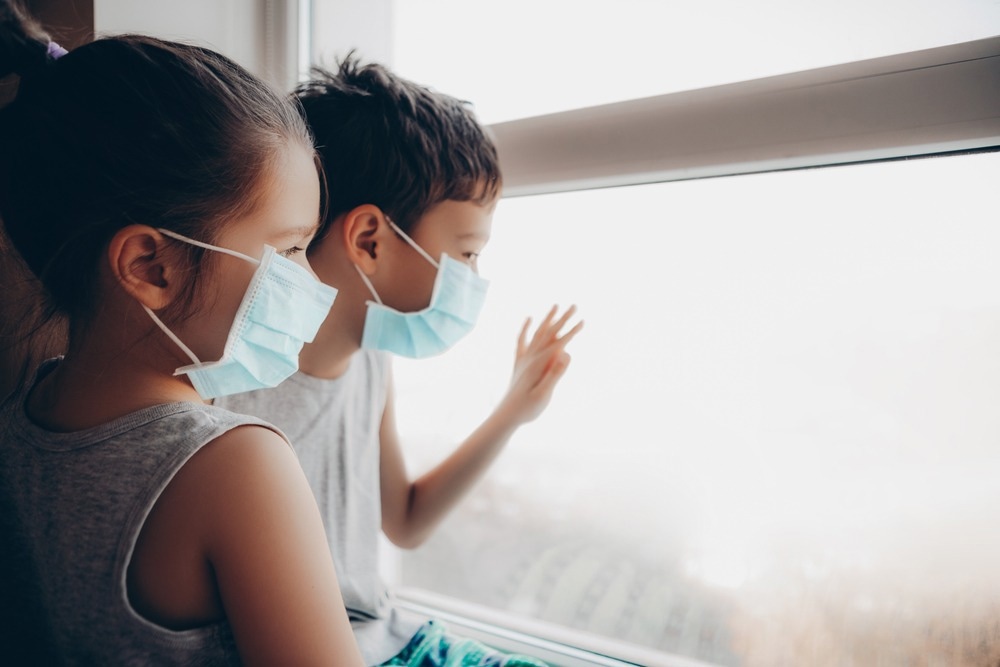 By Neha MathurReviewed by Danielle Ellis, B.Sc.Feb 2 2023
By Neha MathurReviewed by Danielle Ellis, B.Sc.Feb 2 2023In a recent study posted to Research Square* and under review at the European Journal of Pediatrics, researchers reported findings of a multicenter study conducted across ten hospitals in Italy to investigate the safety of Remdesivir (RDV) in children affected by coronavirus disease 2019 (COVID-19). Additionally, they examined its tolerability and the clinical characteristics of RDV-treated pediatric patients post-treatment.
 Study: Use of Remdesivir in children with COVID-19: report of an Italian multicenter study. Image Credit: L Julia/Shutterstock
Study: Use of Remdesivir in children with COVID-19: report of an Italian multicenter study. Image Credit: L Julia/Shutterstock

 *Important notice: Research Square publishes preliminary scientific reports that are not peer-reviewed and, therefore, should not be regarded as conclusive, guide clinical practice/health-related behavior, or treated as established information.
*Important notice: Research Square publishes preliminary scientific reports that are not peer-reviewed and, therefore, should not be regarded as conclusive, guide clinical practice/health-related behavior, or treated as established information.
Background
Most clinical trials evaluating RDV have focused on adult patients. Though generally milder, some children also develop serious severe acute respiratory syndrome coronavirus 2 (SARS-CoV-2) infection like adults. In November 2022, the European Medicines Agency (EMA) approved RDV treatment for pediatric COVID-19 patients aged ≥28 days and weighing ≥ 3kg. Thus, there is an urgent need to determine whether Remdesivir (RDV) use in children is safe.
About the study
In the current study, researchers collected the clinical data of children who had severe COVID-19, defined as a need for more supplemental oxygen compared with baseline, and received RVD treatment between March 2020 and February 2022.
The team administered RDV based on the children's weight. For instance, children weighing less than 40 kg received five and 2.5 mg/kg RDV on day 1 and from day 2 onwards, respectively. They increased RDV dosage for children weighing over 40 kg. They monitored liver enzymes every two to three days in all drug recipients and checked their renal function during and after RDV treatment.
The researchers compared clinical data based on RDV treatment duration. The average time from COVID-19 symptoms onset to RDV administration was six days, and from diagnosis of pneumonia to RDV administration was two days. While 32 children received RDV for five days, nine received it for more than five days, but a maximum of 10 days.
The researchers expressed continuous variables as standard deviations (SDs) or medians and categorical variables as relative percentages. Finally, they used linear and logistic regression models to establish an association of all these variables from the bivariate analysis throughout the duration of the administration of RDV treatment.
Study findings
With a cohort of 50 children, of which 32 were boys, the study presents findings from the second-largest dataset on the use of RDV for pediatric COVID-19 treatment. Only one was a neonate, and the remaining were young children with an average age of 12.8 years. Most children (~78%) participating in this cohort study had at least one comorbidity, obesity being most prevalent (in 28% of children) and severe COVID-19.
Furthermore, 88%, 74%, and 68% of these children had a fever, cough, and dyspnea, respectively, common COVID-19 symptoms. Importantly, most children were diagnosed with pneumonia of viral or bacterial origin. In 63% and 66% of cases, the researchers also noted increased levels of C-reactive protein (CRP) and leukopenia, respectively.
Previous studies have associated several comorbidities in children with severe forms of COVID-19. In this study cohort, the researchers found obesity and neurological disorders as the most common comorbidities that also increased the risk for COVID-19-related prognosis.
In a nutshell, the study cohort well-tolerated RDV. Intriguingly, RDV was administered in many children diagnosed with severe pneumonia before they needed supplemental oxygen. Yet, it had a few side effects. Thus, pneumonia onset could be considered an important criterion for RDV use in children. Due to bradycardia in three children, RDV treatment had to be discontinued, which restored the heart rate to normal within 24 hours. Thus, the researchers also advocated continuous monitoring of children via electrocardiogram (ECG) before and during RDV treatment.
Though the researchers could not directly attribute it to COVID-19 or RDV treatment, they noted a mild elevation of liver transaminases in 47% of the children. Notably, alanine aminotransferase (ALT) and aspartate aminotransferase (AST) elevated to 350 units per liter (U/L) and 164 U/L, respectively. Furthermore, more than five days of standard RDV treatment statistically increased the incidence of hypertransaminasemia in these children, suggesting restrained drug use should be considered in some cases.
Conclusions
To conclude, the study data suggested that pediatric populations with COVID-19 well tolerated RDV. Also, the drug was safe and had fewer side effects. Most importantly, RDV treatment prevented progression to severe COVID-19 when administered early, especially in children with comorbidities. On the contrary, its delayed administration in children, i.e., after pneumonia onset, prolonged the duration of antiviral therapy.

 *Important notice: Research Square publishes preliminary scientific reports that are not peer-reviewed and, therefore, should not be regarded as conclusive, guide clinical practice/health-related behavior, or treated as established information.
*Important notice: Research Square publishes preliminary scientific reports that are not peer-reviewed and, therefore, should not be regarded as conclusive, guide clinical practice/health-related behavior, or treated as established information.